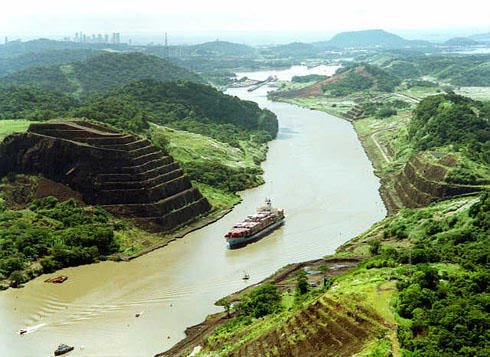Panama Canal

Tuesday, May 1, 2012
PP Notes Islam
World History II
With Prof. RaeAnn L. Osborne
Islam
Division Within
Shiite – believe authority through direct lineage, Imam is a guide (Hadith is different)
Sunni – believe authority through appointment, Caliph is a political/religious figure
Sufism – Islamic mysticism
Persia and Afghanistan
Safavids conquered an area, formally part of Russia,
in modern day Iran.
Safavids 1500 to 1722
Abbas I 1587-1629
India 1526- 1858
The Mughals
The Mughals
Akbar 1556-1605
13 years old when crowned
Persian mother, Turkish father
Outstanding military talent
Understood administrative facet of government
Encouraged reconciliation with Hindu subjects
Created a new faith
Tried to change position of women
Regime reached peak of its splendor
Decline
The Osmanli Dynasty
Turkic - 13th century (Osman I)
Gazis, rapid expansion, jihad
By 1453 Byzantine was defeated
Expand the empire into Europe, Asia, North Africa and the Middle East
Mediterranean military dominance until 16th century
The Ottoman Empire
Muslims, Christians, Jews
Turks, Persians, Mongols, Mesopotamians, Muslims
Absolute authority: Adala (affected war)
Sultan: political, military, judicial, social and religious
Titles: Padishah, Khan, Imam, Caliph
Strong military
From Constantinople to Istanbul
Suleyman Defender of Islam
The Lawmaker 1520-1566
Suleyman I (Soloman):
“Golden Age”
Codified laws
Pragmatic statesman (Grand Vizier)
Amazing general
Opened trade, encouraged tolerance, defender of “Islam”
Spied on his own system –Friday prayers (Intelligence gathering was one of the best in the world until the 20th century)
Executed sons
Architecture
The Ottoman Empire
By the 16th Century
Funneled money into Protestant movement
Adopted a policy of helping any Muslim country threatened by European expansion
Most powerful Empire: wealth, military
Military
The beginning of Decline
Subscribe to:
Post Comments (Atom)
No comments:
Post a Comment